Suzuki's new model rush continues with the all-new, sixth-generation Suzuki Wagon R, a regeneration of the company's fastest-selling kei wagon in Japan. As a worthy contender to Daihatsu's Move, Mitsubishi's eK Wagon, and Honda's N-WGN, the Wagon R has been a clear winner in this category and with its new generation, how does the new model stack up with the competition like its predecessor in terms of fuel efficiency that can't be left unnoticed by the knowledgeable few? Let's investigate.
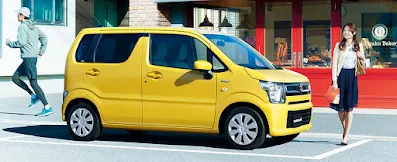 |
| 2017 Suzuki Wagon R |
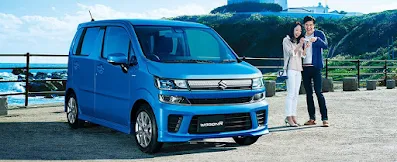 |
| 2017 Suzuki Wagon R |
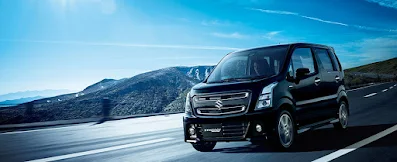 |
| 2017 Suzuki Wagon R Stingray |
Before taking a close look at the heart of the new Wagon R, let's observe the new model's design and it has ambiguous designs that cater to specific customers, regardless of which one they'll be going for. In the normal version, the base FX variant has a front face reminiscent of a Ford F-150 while the FZ variant features a more Vellfire-esque front face. The Stingray, meanwhile, features headlamps reminiscent of the Cadillacs of today.
All models feel like they can be easily mistaken for a Toyota because the side view will put anyone a close reminder of a Toyota Alphard while the rear view looks suspiciously reminiscent of the old Toyota bB millennials would remember. Whatever the heck it is, it's multiple cases of mistaken identities for the new Wagon R.
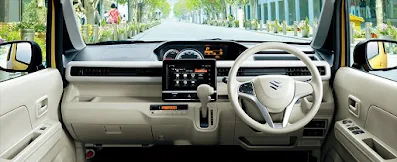 |
| 2017 Suzuki Wagon R interior |
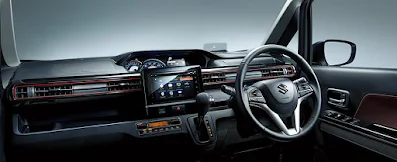 |
| 2017 Suzuki Wagon R Stingray interior |

While the exterior possesses different identity crises from the eyes of many, the new interior sees a much bigger improvement compared to the previous model, which is a bit regular if they're honest. The instrumental panel is now on the center of the dashboard rather than behind the steering wheel while the steering wheel looks highly similar to the latest Suzuki Swift and the available touch-screen sat-nav system now boasts smartphone connectivity with Apple CarPlay and Android Auto compatibility, a first for a kei car.
Apart from the improved dashboard, the new Wagon R boasts the roomiest interior for all kei cars sold in Japan, so it's nice and easy to live with it and stretch yourselves while you're at it. The only downside now is the boot space, which only fits just one suitcase with the rear seats present until you fold it down to accommodate more room for your garage sale stuff and some others.
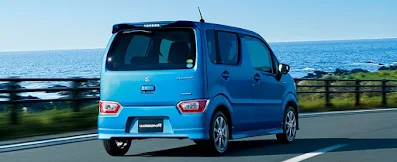 |
| 2017 Suzuki Wagon R |
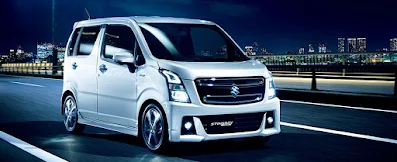 |
| 2017 Suzuki Wagon R Stingray |
In their endless pursuit of producing fuel-efficient cars in Japan, the all-new Wagon R is powered by Suzuki's Mild Hybrid technology as seen in the Solio and the Ignis. A first for a kei car, this mild hybrid setup features an Integrated Starter Generator linked to a lithium battery pack collaborating with its fuel-efficient 660cc engine. The Mild Hybrid and its HEARTECT platform promise improved rigidity, performance, and weight loss. just like the new Swift offered, fuel efficiency has gone up to 33.4kmpl, that's a kmpl more than the previous model with the S-ENE-CHARGE on it, meaning that Suzuki has improved its fuel-efficiency ways courtesy of its Mild Hybrid powertrain and HEARTECT platform and it could soon be applied on future kei cars and models. That, ladies and gentlemen, is their trump card played right.
Remember that the Stingray-exclusive turbocharged 660cc inherits the same Mild Hybrid stuff from the normal ones except it delivers just around 28.4kmpl. Small price to pay for a stylish city car with a small turbocharged engine and compact sizing fit to squeeze through the gaps your average sportscar can't.
The Radar Brake Support system returns on this new model and this safety tech comes with a dual camera brake support system, which detects the vehicle and pedestrians from about 5kph in the speed range of about 100kph and to avoid collisions, the automatic braking feature triggers with the alarm and then it stops. It even comes with a lane departure warning function, and a stagger alarm function, among many others.
Should you buy one? The new Wagon R starts at 1,078,920 Yen for the basic FX model while the Stingray model starts at 1,293,840 Yen, making them more affordable than the previous models and also, good value for money. While the new Wagon R may be questionable on the outside, its fuel efficiency and tech should not be underestimated and it's going to be a new gold standard for Suzuki's future lineup of fuel-efficient cars thanks to its Mild Hybrid and HEARTECT platform that works very well from the new Swift as well as the new Wagon R. As Suzuki keeps on releasing new models more than any car company in Japan, let's see what's next in store for that Japanese car company with its newly found success with this new winning combination of fuel efficiency in the market today.
Photo: Suzuki Motor Corporation



 While the exterior possesses different identity crises from the eyes of many, the new interior sees a much bigger improvement compared to the previous model, which is a bit regular if they're honest. The instrumental panel is now on the center of the dashboard rather than behind the steering wheel while the steering wheel looks highly similar to the latest Suzuki Swift and the available touch-screen sat-nav system now boasts smartphone connectivity with Apple CarPlay and Android Auto compatibility, a first for a kei car.
While the exterior possesses different identity crises from the eyes of many, the new interior sees a much bigger improvement compared to the previous model, which is a bit regular if they're honest. The instrumental panel is now on the center of the dashboard rather than behind the steering wheel while the steering wheel looks highly similar to the latest Suzuki Swift and the available touch-screen sat-nav system now boasts smartphone connectivity with Apple CarPlay and Android Auto compatibility, a first for a kei car. 

 While the exterior possesses different identity crises from the eyes of many, the new interior sees a much bigger improvement compared to the previous model, which is a bit regular if they're honest. The instrumental panel is now on the center of the dashboard rather than behind the steering wheel while the steering wheel looks highly similar to the latest Suzuki Swift and the available touch-screen sat-nav system now boasts smartphone connectivity with Apple CarPlay and Android Auto compatibility, a first for a kei car.
While the exterior possesses different identity crises from the eyes of many, the new interior sees a much bigger improvement compared to the previous model, which is a bit regular if they're honest. The instrumental panel is now on the center of the dashboard rather than behind the steering wheel while the steering wheel looks highly similar to the latest Suzuki Swift and the available touch-screen sat-nav system now boasts smartphone connectivity with Apple CarPlay and Android Auto compatibility, a first for a kei car. 


No comments:
Post a Comment